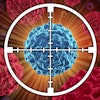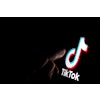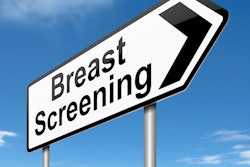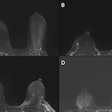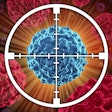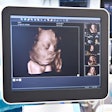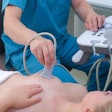A standardized detection reporting system can help radiologists accurately categorize how breast cancer is identified -- either through screening or symptomatic presentation -- when performing image-guided breast biopsies, researchers have found.
Alan Zhu from the Mayo Clinic in Phoenix, AZ, and colleagues determined that such a system led to high reporting accuracy at a sustained rate that improved over time. Their study results were published January 2 in the Journal of the American College of Radiology.
“By implementing method of detection reporting systems, forwarding data to cancer registries, and tracking long-term patient outcomes, this type of program has the potential to accurately quantify the relative contributions of advances in screening and treatment in reducing breast cancer mortality,” the Zhu team wrote.
The U.S. healthcare system currently does not have a registry requirement to report the method of detection for newly diagnosed breast cancers, which limits efforts to determine how breast cancers are discovered.
The American College of Radiology (ACR) Breast Commission Screening and Emerging Technology Committee (SETCOM) recently defined the initial method of detection for breast cancer to be the first test, sign, or symptom that triggered the subsequent workup and recommendation for biopsy.
Zhu and co-authors described their institution’s experience with this systematic reporting of detection methods in their multicenter study. This included reporting frequency, frequency of detection method categories, and accuracy of reporting detection methods. In total, the team included data from 29,999 breast biopsies performed between 2017 and 2023 from 18 imaging sites in four U.S. states.
For the standardized system, radiologists were asked to research the electronic medical record and categorize the method of detection for each breast finding undergoing biopsy. These included the following: symptomatic presentations, imaging modalities, and other.
The team found that the study radiologists' assigned work was concordant with the study authors' assigned work in 87% of manually reviewed biopsies. It also noted that discordant detection method assignments were caused by mistaking a symptomatic presentation for an imaging modality (8/13) or mistaking an imaging modality for another imaging modality (5/13).
Additionally, the four most prevalent methods of detection included mammography, MRI, ultrasound, and self-exams. Together, these accounted for 85.3% of all biopsies. The team also highlighted that detection methods from imaging modalities were 9.6 times as common as symptomatic presentation detection methods.
The method-of-detection reporting rates for malignant and nonmalignant biopsies were not significantly different (p = 0.8126), the researchers reported. Also, the system led to high and sustained reporting of detection methods at five years and 10 months, ranging from 93.4% to 100%.
Finally, the reporting rate also varied across the four states, ranging from 96.5% to 99.96%. By imaging site, reporting ranged from 95.2% to 100%. The researchers noted that the lowest reporting rates were due to outlier radiologists who had significantly lower reporting rates than other radiologists.
The study authors suggested that more training in categorizing methods of detection could further improve accuracy and compliance.
“Next steps include increasing awareness of the importance of … classification and the definition of methods of detection as proposed by the ACR among radiologists,” they wrote.
The full study can be found here.

